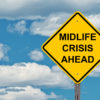Impostor Syndrome is a term we hear come up repeatedly. This is a term that gets referenced in the workplace, becoming a new parent, moving to a new city, and so many other situations.
It’s not uncommon to talk about the concept with someone and have them say “oh my gosh, I have that!” On the other hand, it’s also a term that gets thrown around with a level of nonchalance that can be harmful when used to label what you observe in others.
Impostor Syndrome is the focus of conversation for episode 6 of the House of Apis podcast. We wanted to explore just exactly what the phenomena is, but to also discuss the problems with how the term is used and where the definition falls short of looking at a complete picture. Here’s a bit of what we explored.
Impostor Syndrome is a phenomena introduced by Pauline Rose Clance and Suzanne Imes in 1978. According to Clance and Imes Impostor Syndrome is an “internal experience of intellectual phoniness” that they said is most prevalent among high achieving women.
But there’s a challenge with the original research -as noted in a Harvard Business Review article “Stop Telling Women They Have Impostor Syndrome” by Ruchika Tulshyan and Jodi-Ann Burey who note that the “earlier research excluded the effects of systemic racism, classism, xenophobia, sexism, heterosexism and other biases.” In fact Clance and Ime’s original research sample was primarily white middle to upper class women between the ages of 20 and 45 in a predominately academic setting. Additionally, this phenomenon is most often referenced related to a work or academic setting.
However, this can happen to individuals in any situation where they feel like the outsider or feel that they are at risk of being exposed as a fraud. Psychology Today had a piece that explored the concept of “Mompostor Syndrome” and shared that parents today are being confronted with what they call a “Should Storm”. Parents are bombarded with so many “should” and “should not” advice and direction that they are overwhelmed and constantly questioning their ability to be a good parent.
The question we asked ourselves is how do you know if an individual is experiencing Impostor Syndrome in the way that was outlined by Clance and Imes and when is an individual being cast as an impostor by the environment and the individuals around them? The latter is what we’re calling Environmental Exclusion; where the environment around an individual (culture, values, people, behaviors, norms) signal, reinforce, or flat out tell someone they are an impostor or an outsider. The answer can only come when we pause to understand the full picture and not jump to conclusions.
Psychology Today offers nine ways to manage Impostor Syndrome in the traditional sense. These are ways that they offer to be able to navigate when you feel that you are experiencing what Clance and Imes had described.
In addition, we’d like to challenge the House of Apis community to create an environment that allows for growth and inclusion. So the next time that you find yourself thinking “that person has impostor syndrome” do the following steps:
- Keep that thought to yourself vs. sharing the statement to others.Once a label or statement like that is out, it creates a life of its own.
- Ask yourself: Why do I think this?What am I observing that makes me believe this?Why might this be?
- Then before you start listing all the reasons why that person may be internally manifesting impostor syndrome; ask yourself what is it about the environment that could be causing this?Is something happening that would create a situation that could make an individual feel this way?
We ask that you resist the urge to “analyze” them first -but analyze the environment and if the environment is an influence to the situation, what could YOU do to make a difference?





